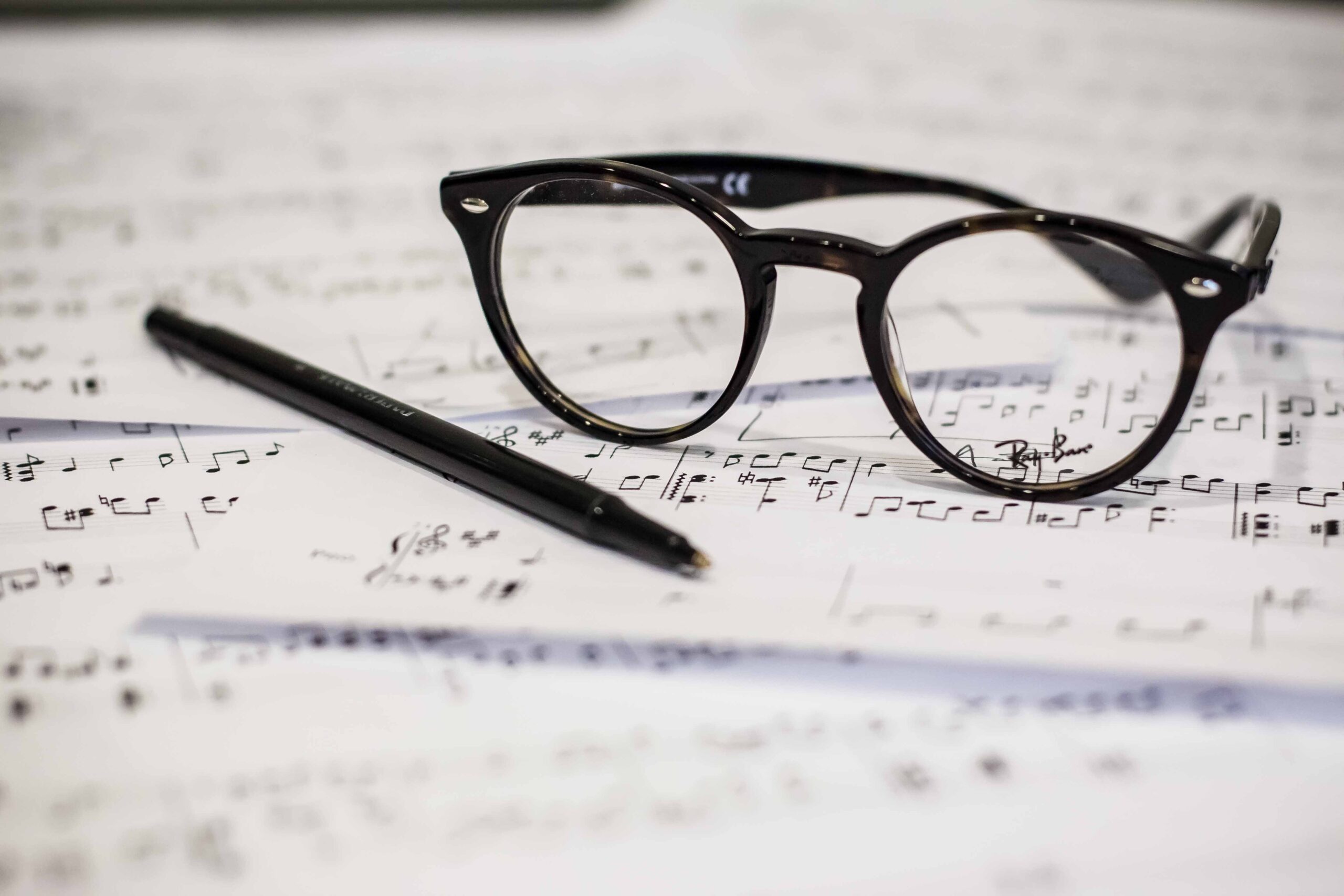- Posted on
- By Benjamin
- In Blog, History, Jazz, Uncategorized

(Featured Image: Dayne Topkin on Unsplash )
Music, the universal language that transcends cultural boundaries, has the power to evoke emotions, tell stories, and bring people together. At the heart of this intricate art lies musical notation, a system of symbols that conveys melodies, rhythms, and harmonies to musicians. Among these symbols, notes stand as the fundamental building blocks of music. Each note carries a distinct meaning, and understanding their significance is essential for any aspiring musician or curious listener. In this blog, we’ll embark on a journey to decode the meanings behind the different notes in musical notation.
The Basics: Pitch and Duration
Before delving into the specifics of individual notes, it’s crucial to grasp two fundamental aspects of music that notes encapsulate: pitch and duration.
-
- Pitch: Pitch refers to the highness or lowness of a musical sound. In notation, this is represented vertically on a set of five parallel lines called a staff. Notes placed higher on the staff indicate higher pitches, while notes positioned lower represent lower pitches.
-
- Duration: Duration refers to the length of time a note is held or played. It’s symbolized by various note shapes and their associated stems and flags.
Understanding Note Values
In musical notation, different note shapes represent distinct note values, indicating the duration of each note. Here are some of the most common note values and their meanings:
-
- Whole Note: A circular note head without a stem. It represents the longest duration among note values. When played, it’s typically held for four beats in 4/4 time signature, the most common time signature.
-
- Half Note: A note head with a stem pointing upward or downward. It’s held for two beats in 4/4 time signature.
-
- Quarter Note: Similar to a half note, but with a filled-in note head. It’s played for one beat in 4/4 time signature.
-
- Eighth Note: An eighth note has a filled-in note head and a flag attached to its stem. It’s played for half a beat in 4/4 time signature.
-
- Sixteenth Note: With two flags attached to the stem, a sixteenth note is played for one-fourth of a beat in 4/4 time signature.
-
- Thirty-Second Note: This note has three flags attached to its stem and is played for one-eighth of a beat in 4/4 time signature.

Combining Notes: Understanding Rhythmic Patterns
Once you’re familiar with individual note values, the next step is to comprehend how they combine to create rhythmic patterns. Rests, symbols representing periods of silence, are also essential to understand rhythm. Here are some common combinations:
-
- Ties: Ties connect two or more notes of the same pitch, indicating that they are held for a combined duration.
-
- Dotted Notes: A dot placed after a note increases its duration by half. For instance, a dotted half note is equivalent to three beats in 4/4 time.
-
- Triplets: Triplets divide a beat into three equal parts. Three triplet eighth notes, for example, would be played in the time normally occupied by two regular eighth notes.

The Last Word
(Songs for Ganda, by the Lorca Hart Trio, is a masterpiece of Jazz notation in action)
In the world of music, notes serve as the bridge between the composer’s imagination and the performer’s rendition. By understanding the meanings behind different notes in musical notation, you gain the ability to read, interpret, and bring to life the intricate melodies and rhythms that have shaped human expression for centuries. Whether you’re a musician or an appreciative listener, delving into the world of musical notation opens up a new dimension of understanding and enjoyment, enriching your musical experience. So next time you hear a beautiful melody, remember that the notes are like the words of a language that speaks directly to our hearts and souls.




